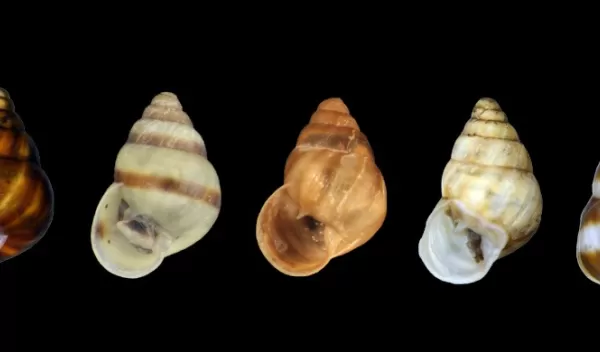
New native Hawaiian land snail species discovered
Scientists at the Florida Museum of Natural History and other institutions have discovered a new native Hawaiian land snail species, sounding a rare, hopeful note in a story rife with extinction.
Pacific island land snails are among the world's most imperiled wildlife, with more recorded extinctions since 1600 than any other group of animals. Hawaii's once-teeming land snail scene of more than 750 species has shrunk by more than half, ravaged by habitat loss and invasive species such as rats, Jackson's chameleons and the carnivorous rosy wolf snail.
Auriculella gagneorum, a small, candy-striped snail from Oahu's Waianae Mountains, represents the first new species of a living Hawaiian land snail described in 60 years. The researchers published their findings in ZooKeys.
The species "brings that little glimmer of hope that this isn't all a depressing story," said the study's lead author, Norine Yeung.
The scientists found A. gagneorum during a large-scale, decade-long survey of land snails that spanned 1,000 sites throughout the Hawaiian Islands. The researchers then used a museum collection supported by the U.S. National Science Foundation to match snails obtained during the survey to unidentified specimens from the 1940s.
"This is a happy story where we discovered a snail that is still around," Yeung said. "There are so many things in our collection that we can no longer find in the wild. But in this snail's case, we can finally put a name to it and describe it, which is huge for the conservation of this species."
The tree-dwelling snail shows pronounced variation in coloring, from burnished tiger's-eye patterning to dramatic sable and white stripes. At less than two-tenths of an inch long, "you might be able to fit a dozen on your fingernail," said study co-author John Slapcinsky.
